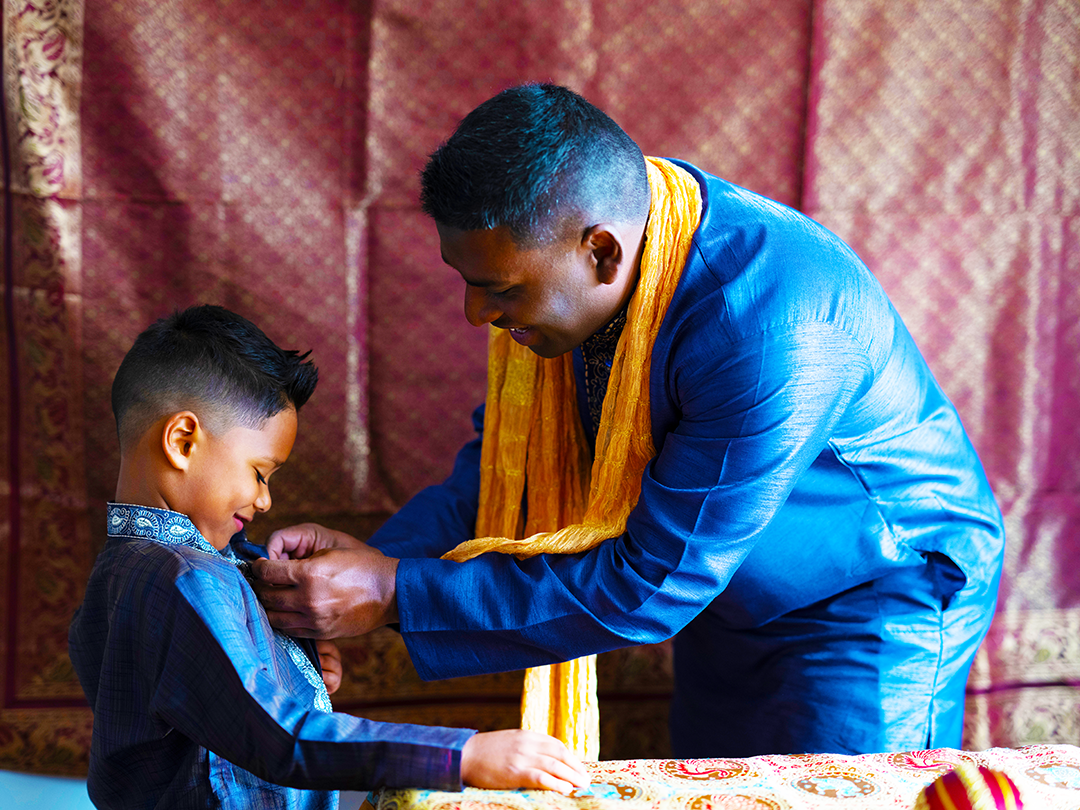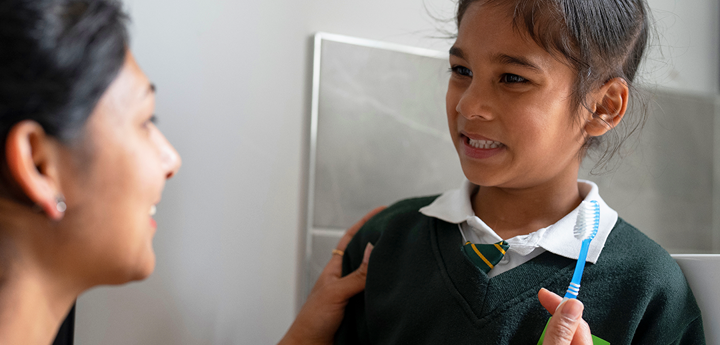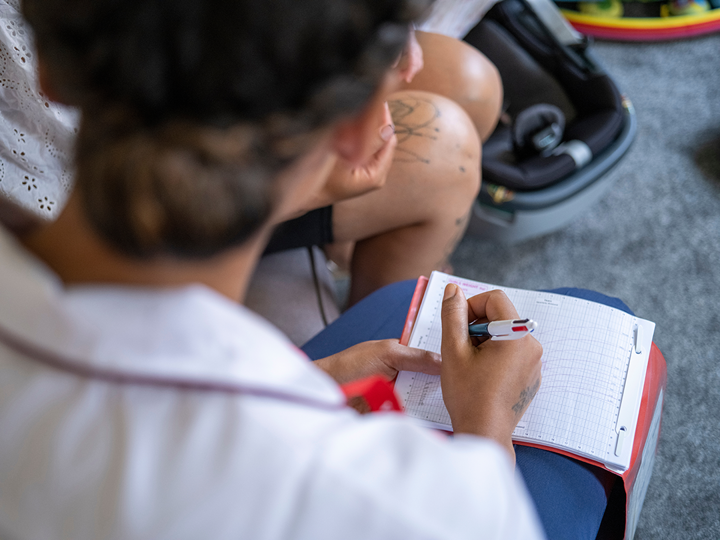Dressing strategies for sensitive children
- SEND
- Behaviour, emotions and mental health
- Child development and growing up

Getting dressed can be a tricky time for children with sensory processing difficulties. Some children hate the feeling of any kind of clothes against their skin. Other may hate the feeling of socks or gloves. Clothes can feel wrong.
Introducing a new strategy
Each child and young person is unique. When considering strategies, make sure to keep your child or young person in mind. This is a trial and error process. So, when one strategies doesn't work, there may be another strategy to try instead.
When trying a new strategy, give yourself and your child or young person the best chance to succeed. Try to start a new strategy at the end of the day, a weekend or during a school break. This reduces the pressure to get the task or activity done in a short timeframe.
It is important that when you trial a new strategy you:
- Communicate with your child. You can use communication aids like social stories, picture symbols, visual schedules and sequence strips.
- Stay consistent. By sticking to a routine, your child can learn what is going to happen next. This helps reduce the stress around self-care activities.
- Keep the surroundings organised. Try to make sure things are put back in their place. This helps teach your child that this is where the item belongs. They will then be able to find the item by themselves and be more independent.
How clothes can affect your child
Clothes have a huge impact on your child or young person's day-to-day life. Some children are very sensitive to how clothes feel. Wearing uncomfortable clothing can be very frustrating.
Your child or young person may be using a lot of mental energy trying to ignore how their clothes feel. This constant discomfort makes it harder to pay attention and follow instructions. It can lead to difficult behaviour and meltdowns as they try to cope with the stress of their clothes.
Common sensory issues with clothes include:
- textures feeling 'icky' or 'gross'
- hating how their clothes 'feel' on
- itchy fabric
- fabrics that catch on their skin or nails
- clothing tags irritating their skin
- feeling the seams in their clothes
- feeling wrinkles, fuzz balls or 'pills' in or on their clothes
- not liking clothes that 'fit' them, preferring clothes that are too big or too tight

Choosing and buying clothes for your sensitive child
It's important to keep your child in mind when buying clothes for them. Especially when your child is sensitive to fabrics and textures. It will help your child when they know they have a wardrobe with comfy clothes in. Choosing clothes from their wardrobe can help build confidence and self-esteem.
When buying your child's clothes you may want to consider your child's preferences, such as:
- the length of sleeves, skirts and trousers
- the tightness of the clothes
- seamless underwear and socks
- clothes with flat seams
- fabrics such as cotton rather than denim or corduroy
- the colour or pattern of fabrics, patterns may be distracting for some children

You may want to avoid clothes with buckles, zips, buttons, zippers and fastenings. These can be loud and distracting for children and young people who are sensitive to sounds.
Some children find it hard to keep their hands out of their nappy or underwear. Try buying bodysuits, unitards and body vests.
Your child may prefer laced or velcro shoes that can be tightened. Some children may find the texture of velcro uncomfortable. If this is the case, laced shoes may be better.
You may find it easier to shop for your child's clothes online. Ordering online allows your child to try the clothes on in the comfort of your home. Shops can be overwhelming due to the crowds, loud noises and bright lights.
Finding adapted clothes online for children
There are many websites that sell adapted clothing for children. These include seamless socks, pants with flat seams, pants without labels and pull up trousers with the label in the pocket.
The following websites sell adapted clothes for children:
Strategies to help dress your child
The activity of getting dressed can feel overwhelming for some children. There are lots of senses that are being used at the same time. Depending on what your child is sensitive to, they also be scared of dressing as they may fall over or feel disorientated.
Some techniques that may be helpful:
Before getting dressed, do some deep-pressure exercises. For example, press-ups against a wall, star jumps or commando crawling. This can help them to get dressed by reducing their sensitivities around being touched or the feeling of fabric against their skin.
Allow your child to wear a comfortable but uncoordinated outfit. Letting your child wear mismatched or out-of-season outfits allows them to focus on tasks instead of how they feel in their clothes. For example, letting your child wear their halloween themed pajamas in summer can help them feel more comfortable. Sometimes what is comfortable is not the most trendy or visually appealing outfit. This can be referred to by some people as dopamine dressing.
Let your child wear their underwear or socks inside out. Some children find the feeling of seams against their skin uncomfortable and sometimes physically painful. By turning the underwear and socks inside out, the seams are facing outward and not against their skin. Alternatively, you can buy seamless socks and underwear.
Get dressed in one position. Some children can feel disoriented and unbalanced when changing from one position to another. This can make changing from standing to crouching to sitting more difficult. They may avoid getting dressed or wearing certain clothes because of this. By staying in one position, your child can feel confident in their spatial awareness and balance.
Have you tried looking at our general advice?
You may want to look at our other advice for more information.
Helping your child to keep their clothes on
Some children will take off their clothes at inappropriate times. There are many reasons why children may take off their clothes. Figuring out the reason why they are taking off their clothes can help you understand how you can encourage them to keep their clothes on.
The reason could be:
Clothes are overstimulating. This means that your child or young person finds it overwhelming or distressing when wearing clothes. You can help your child by giving them tight or snug fitting clothing. You can also give them heavy or weighted clothing. These can help with the feeling of being overstimulated and overwhelmed.
Liking the feeling of air on their skin. Some children will remove their clothes because they like how air feels on their skin. Giving your child loose fitting clothes can help your child feel like they are wearing less clothes. You can also give them clothes with different textures or that move when they move such as flowy shirts or dresses.
Caring for the clothes
Follow the care instructions provided by the manufacturer. These instructions are usually found on the clothing label.
There are some ways you can care for the clothes at home that can help your child:
Cut out or unpick labels or tags from your child's clothes. This can immediately help your child feel comfortable in their clothing. Try to make sure there are no rough or scratchy edges left. Rough or scratchy are as sensorly upsetting as a label or tag.
Wash clothing using unscented detergent and fabric softener.
If available, use a tumble dryer or dehumidifier to dry clothes. This will help soften the clothes and reduce stiffness.
Last reviewed: 1 November, 2024




